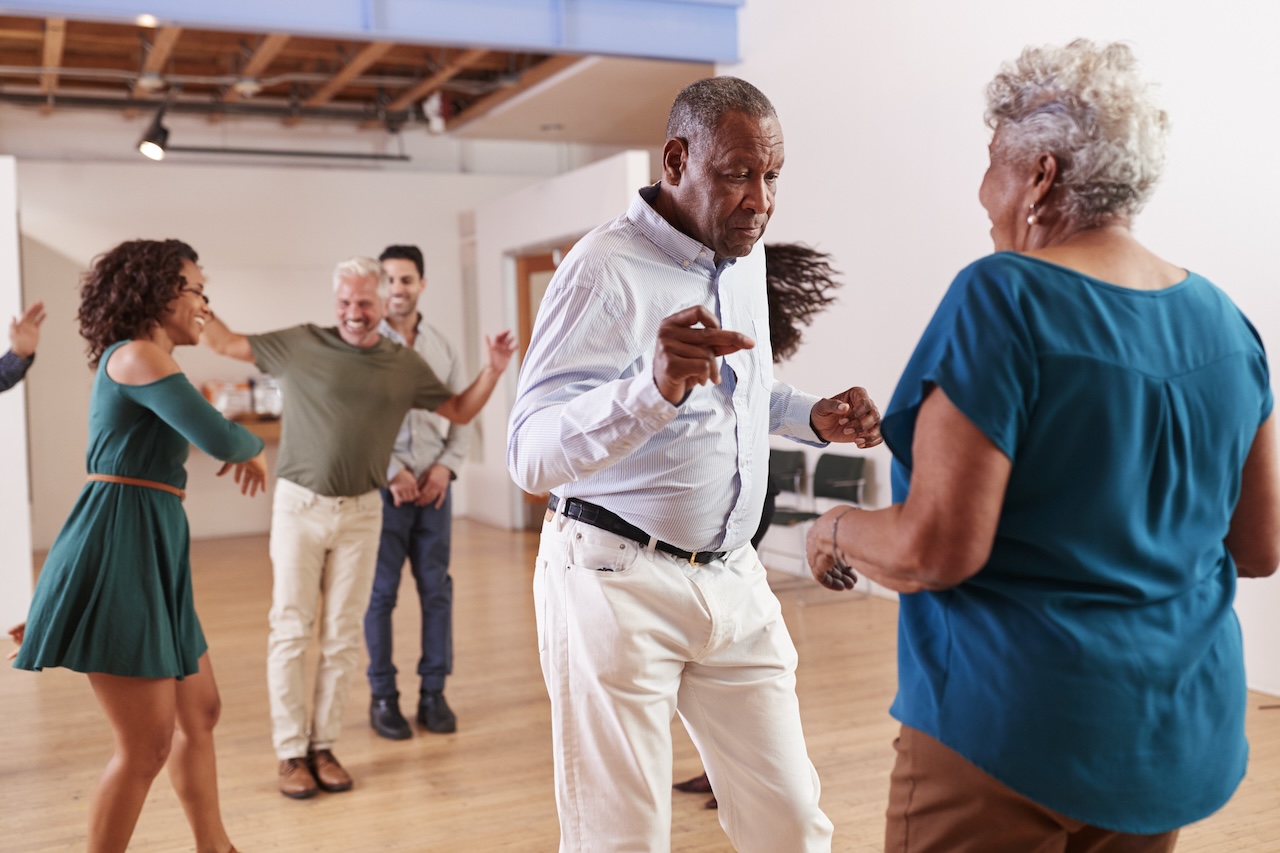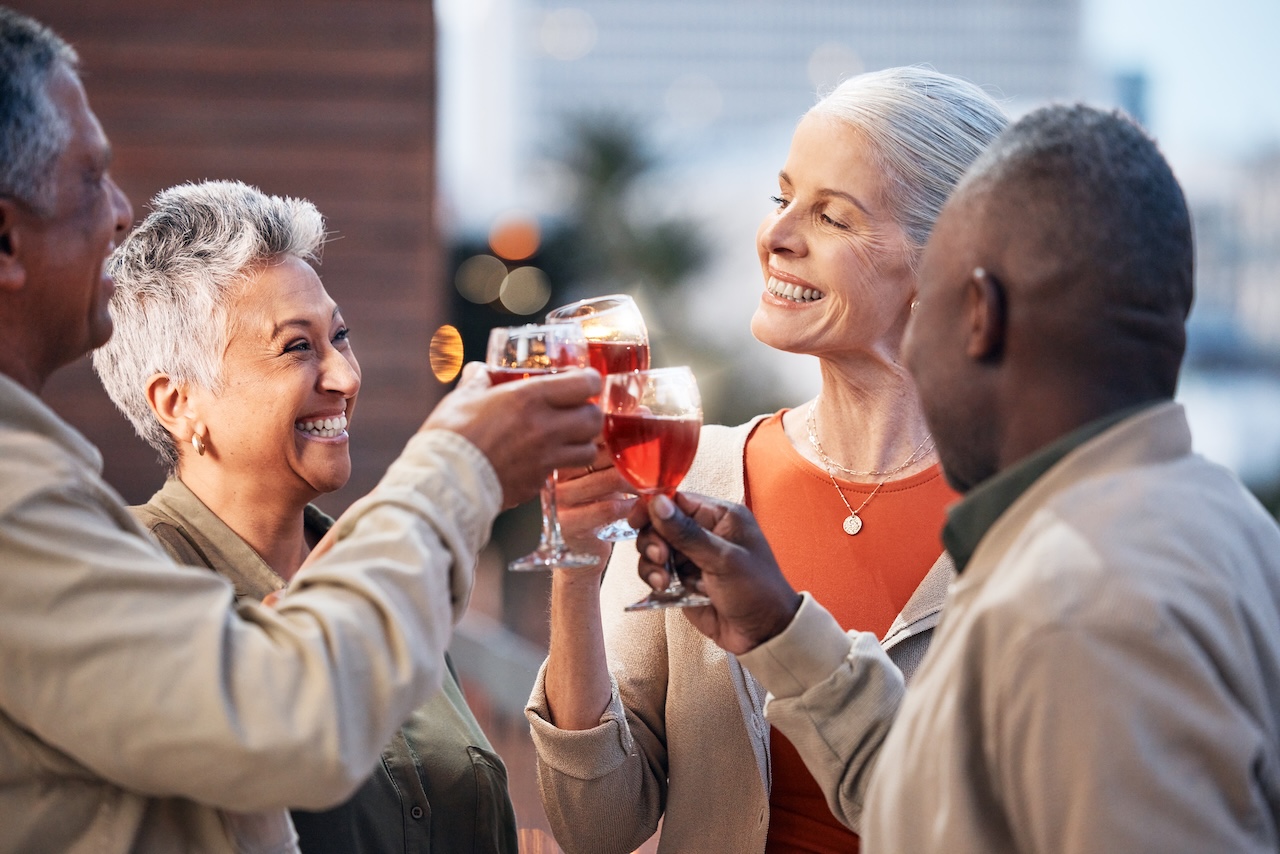Main Street News

Blue Zones: Co-housing Creates Community for Seniors
It’s so important to stay connected. As people age, it often becomes more difficult for them to stay connected. Loneliness and social isolation in older adults are public health risks currently affecting a large population of people in America.
Psychology Today defines loneliness as a state of distress or discomfort that results when one perceives a gap between one’s desires for social connection and actual experiences. Even some people who are surrounded by others throughout the day—or are in a long-lasting marriage—still experience a deep and pervasive loneliness.
Research suggests that loneliness poses serious threats to well-being and long-term physical health. In fact, the World Health Organization (WHO) declared it a global health threat with detrimental effects on health equivalent to a person smoking 15 cigarettes a day.
The Centers for Disease Control & Prevention (CDC) cited a report from the National Academies of Sciences, Engineering, and Medicine (NASEM), which revealed that more than one-third of adults aged 45 and older feel lonely, and nearly one-fourth of adults aged 65 and older are considered socially isolated. Older adults are at increased risk since they’re more likely to live alone, lose family or friends, have chronic illnesses, and experience hearing loss.
Enter: Blue Zones
“Blue Zones” are destinations worldwide where people live longer and better. The regions include Okinawa, Japan; Sardinia, Italy; Nicoya, Costa Rica; Ikaria, Greece, and Loma Linda, California. Although the residents of these regions are scattered across the globe, they share several commonalities.
Dan Buettner, educator, author, and National Geographic fellow is recognized worldwide for his research on longevity. He developed an interest in the subject while he was traveling the globe as an endurance biker. Exposure to other cultures and their lifestyles sparked his demographic research on regions with the longest life expectancy, disability-free life expectancy, or concentration of centenarians—people who live to be over 100 years old.
The biking enthusiast reported his findings of communities with increased longevity, identified as “Blue Zones” in his cover story for National Geographic’s November 2005 edition, “Secrets of Long Life.” It became the third best-selling issue in the magazine’s history.
The Blue Zones concept evolved out of demographic work conducted by Gianni Pes and Michel Poulain. It was published in 2004 by the journal, Experimental Gerontology. As Pes and Poulain zeroed in on the cluster of villages with the highest longevity, they began referring to the area as the “Blue Zones.”
These regions support the ideas of healthy eating, active lifestyles, and community involvement. Buettner is the founder of Blue Zones, LLC. Its work is rooted in its own research and identification of the world’s longest-lived cultures.
Better living and the Power 9 practices
Sardinia’s Barbagia region boasts the world’s highest concentration of male centenarians while residents of Ikaria, Greece have one of the world’s lowest rates of middle age mortality and dementia. Costa Rica’s Nicoya Peninsula is home to the world’s lowest rates of middle age mortality and the second highest concentration of male centenarians.
The Seventh Day Adventists in Loma Linda, California live 10 years longer than their North American counterparts. In Okinawa, Japan, women over age 70 represent the longest-lived population in the world.
Research has revealed that lifestyle and environment play a big role in longevity. According to a Danish population-based twin study, only about 20% of how long the average person lives, is determined by genes.
The Blue Zones areas share a set of habits called the Power 9 that—together—increase longevity, health, and happiness. It’s not just longevity for the sake of a number, but vitality. Here’s a list of those habits:
Move Naturally
The world’s longest-lived people don’t run marathons or put in lots of hours at the gym. They live in towns and villages that are dotted with hills and are perched atop mountains. Beyond growing their own veggies and fruits, they tend their own gardens and don’t use modern machinery for tackling yard work.
Purpose
The Okinawans call it “Ikigai. “The Nicoyans call it “plan de vida.” This translates to “why I wake up in the morning” or “Soul’s Purpose.” This can add up to seven years of extra life expectancy.
Down Shift
Just like people everywhere else, people who live in Blue Zones experience stress. This leads to chronic inflammation, which is associated with every major age-related disease. Those in the Blue Zones have routines to help them combat that stress. Okinawans take a few moments each day to remember their ancestors; the Adventists in Loma Linda pray, the Ikarians opt for an afternoon nap; and the Sardinians enjoy a glass of wine with neighbors, friends, or family.
80% Rule
“Hara hachi bu” is the Okinawan, 2,500-year-old Confucian mantra that is said before meals. It reminds people to stop eating when their stomachs are 80 percent full. The 20 percent gap between not being hungry and feeling full could be the difference between losing weight or gaining it.
Plant Slant
Beans, including fava, black, soy, and lentils, are the cornerstone of most centenarian diets. Meat is eaten on average only five times per month. Serving sizes are 3-4 oz., which is about the size of a deck of cards.
Wine at 5
People in all Blue Zones (except Loma Linda’s Adventists) drink alcohol moderately and regularly. Moderate drinkers outlive the non-drinkers. The key to alcohol and longevity is to drink 1 to 2 glasses per day with friends and/or with food. No binging!

Belong
All but five of the 263 centenarians interviewed for the Blue Zones research, belonged to some faith-based community. Denomination doesn’t seem to matter. Research shows that attending faith-based services four times per month will add between 4 and 14 years of life expectancy.
Loved Ones First
Successful centenarians in the Blue Zones make their families their top priority. They choose to keep their aging parents and grandparents nearby or in their own homes—a move that also lowers the disease and mortality rates of children in those homes. Most of those who were interviewed have committed to life partners—this can add up to 3 years to a person’s life. They also make big investments of time and love, into their families.
Right Tribe
The world’s longest-lived people chose–or were born into–social circles that supported healthy behaviors. Okinawans create “moais”–groups of friends that commit to each other for life. Research from the Framingham Heart Studies—a long-term, ongoing cardiovascular cohort study of residents of Framingham, MA, revealed that smoking, obesity, happiness, and loneliness are contagious. The social networks of long-lived people have favorably shaped their health behaviors.
Community Centric Seniors
Nancy P. Kropf, Dean of Perimeter College & Professor of Social Work at Georgia State University and Sherry Cummings, Associate Dean and Professor of Social Work at University of Tennessee are academic social workers and gerontologists who have studied older adults. They wrote a recent article in the Blue Zones newsletter.
Their article stated, “One of the major questions of growing older is, ‘where do I want to live as I age?’ Living preferences are changing, as are relationship patterns, such as greater numbers of mid- and late-life adults who are single, childless, or live at a distance from adult children. ‘Senior co-housing communities,’ or SCCs, are a form of communal living that integrates common areas and private residences. They promote choice and independence, which are particularly important for the aging baby boom generation.”
Cohousing and Community
Kropf and Cummings wanted to find out how these communities promote health and well-being. According to their article, co-housing is a relatively new type of living arrangement. The first modern co-housing community was developed in Denmark in 1972. In the US, senior co-housing started in the early 2000s. There are now 17 communities, and 28 currently in formation or under construction.
Co-housing communities bring people together who choose to live cooperatively based upon shared values. Examples are the desire to promote environmental sustainability or social justice, or a shared spirituality. Common elements include a community vision statement that articulates important principles along with a hierarchical governance and decision-making structure.
Residents live in individual homes but share some spaces such as a common building with a kitchen, library, and exercise room. Patios and gardens are positioned in a way to promote interaction. As a result, residents engage in communal meals and other activities.
The Happy documentary, which was released in 2011, highlighted Denmark’s co-housing communities where multiple families (these are not senior-centric) live on a plot of land or in a single building and share chores. The children who live in co-housing said they enjoy the perks of having friends at school and the friends at home. The families eat together and share cooking responsibilities. Another perk!
Kropf and Cummings said the new co-housing arrangements they’re referencing differ from traditional over-55 residential communities, which are planned and managed by a developer. These places are often large and provide organized activities. Typically small, SCCs are planned, developed, and operated by the residents. This promotes community, social engagement, and active aging.
The experience
In 2018, Kropf and Cummings visited 12 SCCs in six states and interviewed 76 people. The smallest included 10 individual homes; the largest consisted of 41 condo units. Some were in rural areas, while others were in cities.
In a few places, they spent the night and participated in shared meals, happy hours, and soaking in a hot tub. The ages of the residents ranged from the mid-50s to mid-90s. They found that some communities had individual housing units, while others were condominiums. All had a common house with a kitchen area and spaces for meetings and socializing, and some had elevators. Many had a guest room.
Several themes emerged from their interviews and conversations. Social engagement is one of the major reasons people choose to move these communities. Being part of a community that offers mutual support has a positive impact on health status, connection, and quality of life during later years.
The residents reported that they enjoy common activities and opportunities for spontaneous interactions. Caring relationships developed among the residents. Many described the support received after a hospitalization or significant loss and help with tasks such as pet sitting. Being a source of assistance was also important and engendered feelings of being worthwhile and needed.
There were many norms around interactions to manage the public-private spaces. The opportunity to have close relationships with others, but have individual space, is important. In one community, sitting on the front porch meant that you were available for conversation. If you sat on the back porch, people wouldn’t bother you.
“From our time at the shared communities, it was clear that living in a shared governance, communal housing arrangement provided opportunities for growth. People described being more patient, open to new learning, having vitality and valuing multiple perspectives,” said Kropf and Cummings.
This type of community is not for everyone. Although some shared community units are moderately priced, many are costly. A person must be willing to work, as the shared areas require maintenance. residents are expected to serve on governance committees.


